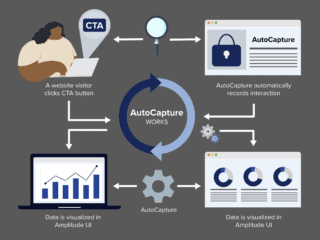If you’ve been a Google Analytics 360 customer in the past — or even just considered GA 360 — you’re likely aware of the basics of how GA 360 has been priced. With the transition to GA4, however, there’s a fairly significant change to the pricing model. In this post, we’ll provide a basic overview to help you understand what’s changing with GA 360 pricing.
Pricing for Universal Analytics 360
Let’s start with a refresher on how pricing worked in the Universal Analytics era. To slightly oversimplify, GA 360 was a fixed-fee product. For an up-front price (the retail price suggested by Google has been USD $150,000/year), you’d be entitled to collect up to a certain amount of data. If your data collection ramped up or slowed down in any given month, your license cost wouldn’t change.
If you exceeded your agreed-upon limit for data collection in a given month, you would then incur some overage charges, but these were generally rare. Most organizations experienced Universal Analytics 360 as a truly fixed-fee product.
What is the Cost of Google Analytics 4 360?
As we move into the era of GA4, the pricing model is changing from a fixed-fee model to a usage-based model, with the key variable being the volume of data you wish to collect. Google suggests for the cost of Google Analytics 4 360 to start at a retail price of USD $50,000/year, which entitles customers to 25 million events per month at no additional cost. Above that threshold, though, as you collect more data, your costs will increase — and vice versa.
Also, as you might expect, there are bulk discounts built into the model. In other words, while more data collection means higher costs, the cost-per-event will decrease as your data volumes increase. As such, the cost curve tapers as you get into higher and higher data volumes, as illustrated below.
It’s important to understand the change to a usage-based model, because it means that the way you plan and deploy Google Analytics now has the potential to directly impact your costs on the platform. For example, in GA4, if you’re pushing events to the platform but you’re not using them for analysis, you’re paying for something you’re not using.
On that note, two GA4 360 features — rollup properties and subproperties — come at some additional cost. Events that you collect and then push into either a rollup or subproperty will be billed as if they were half of an event. For example, if you collect 100 events and then push them into a subproperty, you’ll be billed for 150 events total. You can read more about rollup properties and subproperties here, and if you’re interested in a general comparison of GA4’s free and 360 capabilities, we’ve got you covered.
Summary
The shift from a fixed-fee to a usage-based model comes, inevitably, with some pros and cons. A clear advantage is that you’ll now have clarity in terms of why your costs are what they are — and you’ll have some insight into how to streamline your costs. However, a possible disadvantage is the less-predictable nature of the cost of the product. If your data collection volumes fluctuate significantly from month to month, that could mean that your monthly costs for GA4 360 will also change significantly.
If you’re already a GA 360 customer, and you’d like to get started with understanding how the shift in the model might impact your organization, take a look at Google’s new Bill Preview tool. To access it, log into Google Analytics, then navigate as follows: Visit Platform Home > Administration > [Your Organization Name] > Usage > View usage and sample pricing for GA4 properties. Note that you should only use this tool if your GA4 implementation is already complete, because the estimate provided will be based on the data currently flowing into your GA4 property. Alternatively, get in touch with us and we can provide guidance that’s specific to your organization.
To learn more about the move to Google Analytics 4, check out our Beginner’s Guide to GA4.



















